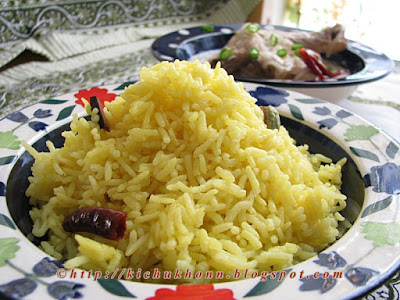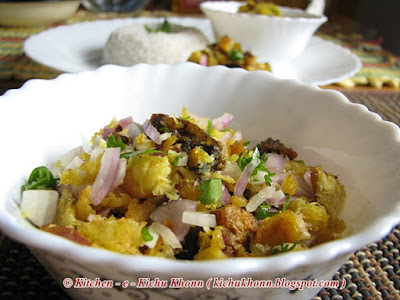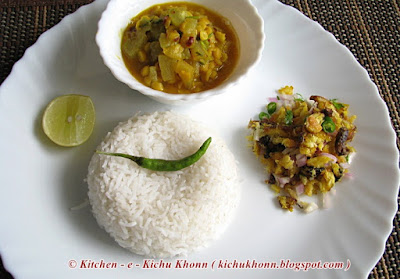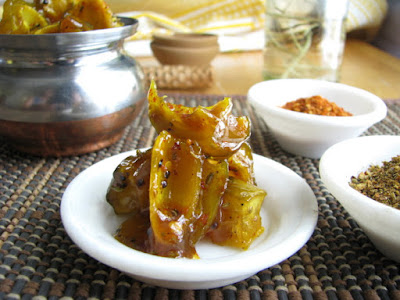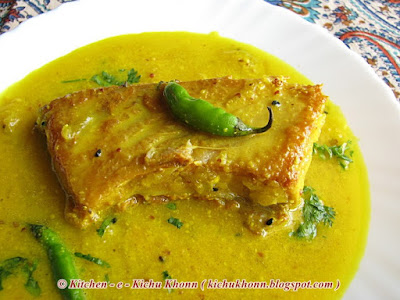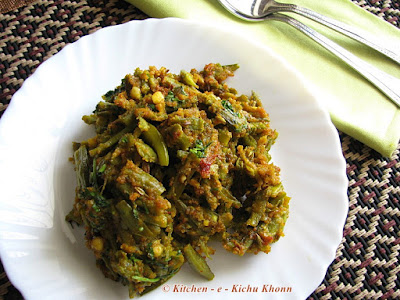Kitchen cleaned ... check.
Dals, rice, papads, dry chillies and boris sunned and stocked in air tight bottles .... check.
Achars sunned well and stocked .... check.
Curtains washed ... check.
Pillows and cushions dusted and sunned ... check.
Mattresses sunned .... check.
Covers washed and stored away ... check.
Light quilts sunned .... check.
Light blankets washed .... check.
Light woolens, jackets and shawls sunned and ready .... check.
Winding up half done knittings at a frenzied pace ... check.
(Here is a sneak peek into one .... the throw ... almost done ... just the border needs to be done.
A riot of colours ... isn't it? )
Now, to sit back and watch the clouds as they float by. Slowly increasing by the number every passing day. And I snatch some time from my daily grind to look up at the sky and play my favourite game of making out the shapes of the clouds.
I am ever so ready for the monsoons.
The breeze is heavy with a warm, wet smell ... a tell tale sign of the water content it is carrying.
Or maybe the smell of wet earth from some far off place that has seen rain way before us.
There is a marked cheerfulness all around along with the cool weather.
Even the birds come less for water these days.
When I have so much to do, I keep cooking to the minimum.
One pot meals rule the days ... read lunches; and stuffed parathas rule dinners.
Or maybe a noodles dish or macaroni loaded with lots of vegetables.
Or a simple dal, bhaat, some bhaja and aloo posto or a makha on the side. Light and uncomplicated.
Just like this Aloo posto.
I have posted Aloo posto earlier.
But ever since I have seen this recipe on Kuntala's blog, I have never made aloo posto the conventional way anymore. Kuntala is a wonderful writer. She blogs at Abantor and if you have not read her blog, yet, you are surely missing a lot.
This is her mother's recipe.
This Aloo posto does not have any temperings, onions or turmeric.
Just the flavours of aloo and posto. And a whiff of fresh green chillies.
And a dash of raw mustard oil.
Nothing a Bengali does not love.
Pure bliss.
Kuntala suggests to keep the posto paste slightly coarse and I have done exactly that.
Need :
Potatoes - 3 big sized, cut into cubes
Posto / Poppy seeds paste - 4 tbsp
Raw mustard oil - 1 tbsp
Fresh green chillies - 2
Salt - to taste
Water - to cook the potatoes
How to :
Place the potatoes with water in a kadahi with a little salt.
Cover and cook till they are done.
Remove cover and add the posto paste and the green chillies.
Add a little water if necessary.
Give a good mix, cover and cook till all water is soaked up.
Remove cover, spread the mustard oil all over, cover and remove from heat.
Let it stand for some time.
Serve hot, warm or cool.
The photographs do not do justice to this ... will try to click better snaps the next time.
I have made the Jhinge (ridge gourd ) posto this way too ... was equally good.
Kuntala suggests this with rotis. I have tried and loved the combination.
But I usually make this for lunch and pair it with the bhaja muger dal and steaming hot rice with a big dollop of ghee.
Heaven!
Enjoy!!
Dals, rice, papads, dry chillies and boris sunned and stocked in air tight bottles .... check.
Achars sunned well and stocked .... check.
Curtains washed ... check.
Pillows and cushions dusted and sunned ... check.
Mattresses sunned .... check.
Covers washed and stored away ... check.
Light quilts sunned .... check.
Light blankets washed .... check.
Light woolens, jackets and shawls sunned and ready .... check.
Winding up half done knittings at a frenzied pace ... check.
(Here is a sneak peek into one .... the throw ... almost done ... just the border needs to be done.
A riot of colours ... isn't it? )
Now, to sit back and watch the clouds as they float by. Slowly increasing by the number every passing day. And I snatch some time from my daily grind to look up at the sky and play my favourite game of making out the shapes of the clouds.
I am ever so ready for the monsoons.
The breeze is heavy with a warm, wet smell ... a tell tale sign of the water content it is carrying.
Or maybe the smell of wet earth from some far off place that has seen rain way before us.
There is a marked cheerfulness all around along with the cool weather.
Even the birds come less for water these days.
When I have so much to do, I keep cooking to the minimum.
One pot meals rule the days ... read lunches; and stuffed parathas rule dinners.
Or maybe a noodles dish or macaroni loaded with lots of vegetables.
Or a simple dal, bhaat, some bhaja and aloo posto or a makha on the side. Light and uncomplicated.
Just like this Aloo posto.
I have posted Aloo posto earlier.
But ever since I have seen this recipe on Kuntala's blog, I have never made aloo posto the conventional way anymore. Kuntala is a wonderful writer. She blogs at Abantor and if you have not read her blog, yet, you are surely missing a lot.
This is her mother's recipe.
This Aloo posto does not have any temperings, onions or turmeric.
Just the flavours of aloo and posto. And a whiff of fresh green chillies.
And a dash of raw mustard oil.
Nothing a Bengali does not love.
Pure bliss.
Kuntala suggests to keep the posto paste slightly coarse and I have done exactly that.
Need :
Potatoes - 3 big sized, cut into cubes
Posto / Poppy seeds paste - 4 tbsp
Raw mustard oil - 1 tbsp
Fresh green chillies - 2
Salt - to taste
Water - to cook the potatoes
How to :
Place the potatoes with water in a kadahi with a little salt.
Cover and cook till they are done.
Remove cover and add the posto paste and the green chillies.
Add a little water if necessary.
Give a good mix, cover and cook till all water is soaked up.
Remove cover, spread the mustard oil all over, cover and remove from heat.
Let it stand for some time.
Serve hot, warm or cool.
The photographs do not do justice to this ... will try to click better snaps the next time.
I have made the Jhinge (ridge gourd ) posto this way too ... was equally good.
Kuntala suggests this with rotis. I have tried and loved the combination.
But I usually make this for lunch and pair it with the bhaja muger dal and steaming hot rice with a big dollop of ghee.
Heaven!
Enjoy!!










